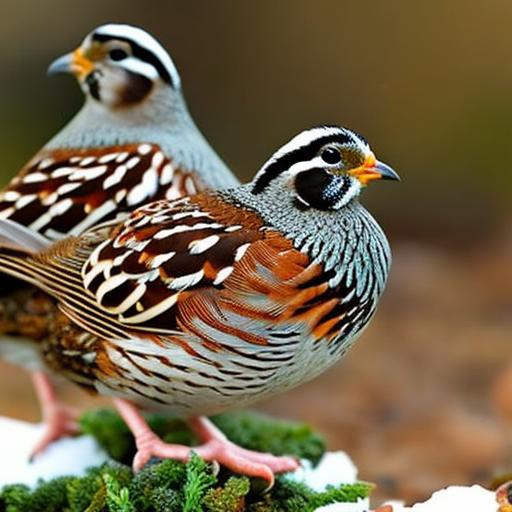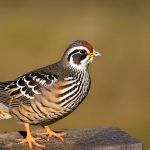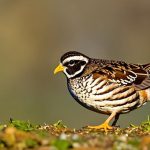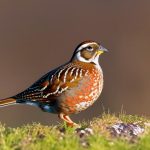Quail, like many other birds, have specific needs during the winter months. Understanding these needs is crucial for ensuring the health and well-being of your quail flock. In the wild, quail are able to adapt to colder temperatures by seeking shelter and fluffing up their feathers to create insulation. However, when kept in captivity, quail may need some assistance in staying warm during the winter. It’s important to recognize that quail are sensitive to extreme cold and can suffer from frostbite and hypothermia if not provided with adequate protection from the elements. By understanding the specific needs of quail in winter, you can take the necessary steps to ensure their comfort and safety.
Quail require shelter from wind, rain, and snow during the winter months. They also need access to food and water that is not frozen. Additionally, quail need to be protected from predators, as they may be more vulnerable during the winter when food sources are scarce. By understanding these needs, you can make informed decisions about how to best care for your quail during the colder months. Providing adequate shelter, warmth, and nutrition will help your quail stay healthy and happy throughout the winter season.
Key Takeaways
- Quail need protection from cold, wind, and moisture in winter
- Adequate shelter includes a draft-free coop with good ventilation
- Heat lamps or heated pads can be used to provide additional warmth
- Insulating the coop with materials like straw or hay can help retain heat
- Providing warm bedding such as pine shavings or straw can keep quail comfortable
Providing Adequate Shelter
One of the most important aspects of caring for quail in winter is providing them with adequate shelter. This can be achieved by ensuring that their coop or housing structure is well-constructed and insulated. The coop should be draft-free and provide protection from wind, rain, and snow. It’s also important to make sure that the coop is predator-proof, as predators may be more active during the winter months. Additionally, the coop should have good ventilation to prevent moisture buildup, which can lead to respiratory issues for the quail.
In addition to the coop, it’s important to provide outdoor shelter for the quail to exercise and forage. This can be in the form of a covered run or a sheltered area within their enclosure. Providing ample space for the quail to move around will help them stay active and maintain their body heat. By providing adequate shelter both inside and outside of the coop, you can ensure that your quail have a safe and comfortable environment during the winter months.
Using Heat Lamps or Heated Pads
In some cases, especially in regions with extremely cold temperatures, it may be necessary to provide supplemental heat for your quail. This can be achieved using heat lamps or heated pads placed inside the coop. It’s important to use caution when using heat lamps, as they can pose a fire hazard if not properly secured and monitored. Heated pads are a safer alternative and can be placed under bedding to provide gentle warmth for the quail.
When using heat lamps or heated pads, it’s important to monitor the temperature inside the coop to ensure that it remains within a safe range for the quail. It’s also important to provide a gradient of temperatures within the coop, so that the quail can move to a cooler area if they become too warm. By using heat lamps or heated pads responsibly, you can help your quail stay warm and comfortable during the winter months.
Insulating the Quail Coop
Insulating the quail coop is another important step in ensuring that your quail stay warm during the winter. This can be achieved by adding insulation to the walls and roof of the coop. Insulation helps to retain heat and prevent drafts, creating a more comfortable environment for the quail. It’s important to use materials that are safe for the quail and will not pose a health risk if ingested.
In addition to insulating the walls and roof, it’s important to insulate any windows or openings in the coop. This can be done using weather-stripping or by covering openings with clear plastic sheeting to create a barrier against cold drafts. By insulating the coop, you can help maintain a stable temperature inside and reduce the risk of frostbite and hypothermia for your quail.
Providing Warm Bedding
Bedding plays a crucial role in keeping quail warm during the winter months. The bedding should be clean, dry, and provide insulation from the cold floor of the coop. Good options for bedding include straw, hay, or wood shavings. It’s important to regularly clean and replace bedding to prevent moisture buildup, which can lead to respiratory issues for the quail.
In addition to providing warm bedding inside the coop, it’s important to provide a dry area for dust bathing outside of the coop. Dust bathing helps quail maintain healthy feathers and skin, which is especially important during the winter when moisture levels are higher. By providing warm bedding and a designated dust bathing area, you can help your quail stay clean and comfortable throughout the winter season.
Offering Nutritious Food and Water

During the winter months, it’s important to provide your quail with nutritious food and access to unfrozen water. Quail require a high-protein diet to maintain their body heat during cold weather. This can be achieved by offering a commercial game bird feed or supplementing their diet with mealworms or other protein-rich treats. It’s also important to provide access to grit, which helps quail digest their food properly.
In addition to food, it’s crucial to ensure that your quail have access to unfrozen water at all times. This can be achieved by using heated waterers or by regularly replacing frozen water with fresh, warm water. Dehydration can be a serious issue for quail during the winter, so it’s important to monitor their water intake closely.
Monitoring Quail Health
Finally, it’s important to monitor the health of your quail throughout the winter months. Keep an eye out for signs of illness or distress, such as lethargy, decreased appetite, or unusual behavior. It’s also important to regularly check for signs of frostbite on their combs and feet. If you notice any concerning symptoms, it’s important to seek veterinary care for your quail as soon as possible.
In addition to monitoring their physical health, it’s also important to monitor their behavior and social dynamics within the flock. During the winter months, quail may become more stressed due to reduced daylight hours and confinement indoors. Providing enrichment activities such as hanging treats or providing perches can help alleviate boredom and reduce stress for your quail.
In conclusion, caring for quail during the winter months requires attention to their specific needs for shelter, warmth, nutrition, and health monitoring. By understanding these needs and taking proactive measures to address them, you can ensure that your quail stay healthy and comfortable throughout the winter season. With proper care and attention, your quail flock can thrive even in cold weather conditions.
If you’re looking for tips on how to keep quails warm in winter, you might also be interested in learning about the best feeding practices for geese. Poultry Wizard has a helpful article on whether geese can eat chicken feed, which can provide valuable insights into ensuring the nutritional needs of your poultry are met during the colder months. Check out the article here to discover more about feeding geese and how it relates to keeping your quails comfortable in winter.
FAQs
What are some ways to keep quails warm in winter?
Some ways to keep quails warm in winter include providing them with a well-insulated coop, using heat lamps or heated pads, and ensuring they have access to plenty of bedding for insulation.
How can I insulate my quail coop for winter?
You can insulate your quail coop for winter by using materials such as straw, hay, or wood shavings for bedding, sealing any drafts or gaps in the coop, and adding extra layers of insulation to the walls and roof.
Is it necessary to provide heat lamps for quails in winter?
While not always necessary, providing heat lamps for quails in winter can help to maintain a comfortable temperature in the coop, especially during extremely cold weather.
What temperature should I maintain in my quail coop during winter?
It is recommended to maintain a temperature of around 50-60 degrees Fahrenheit in the quail coop during winter to keep the birds comfortable and healthy.
Are there any specific breeds of quails that are better suited for cold weather?
Some quail breeds, such as the Coturnix quail, are known to be more cold-hardy and better suited for colder climates. It is important to research and select breeds that are well-adapted to the specific climate in which they will be kept.
Meet Walter, the feathered-friend fanatic of Florida! Nestled in the sunshine state, Walter struts through life with his feathered companions, clucking his way to happiness. With a coop that’s fancier than a five-star hotel, he’s the Don Juan of the chicken world. When he’s not teaching his hens to do the cha-cha, you’ll find him in a heated debate with his prized rooster, Sir Clucks-a-Lot. Walter’s poultry passion is no yolk; he’s the sunny-side-up guy you never knew you needed in your flock of friends!







